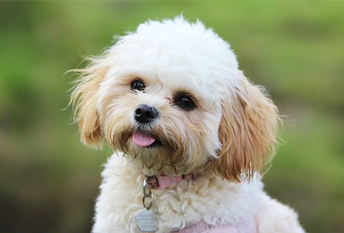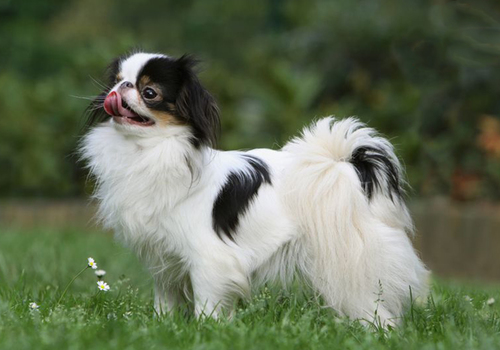Although the actual origins of the breed have been lost in time, it's thought the Japanese Chin first originated in China, but the breed found its way to Japan when the Empress of China offered one of these charming little dogs as a gift to the Empress of Japan. One thing that's for sure is these charming dogs boast being among one of the more ancient breeds to be found and that over the centuries they have remained highly prized. In days long past, the breed was a little different from the dogs we see today because it's thought the original Japanese Chins were crossed with smaller spaniels with an end goal being to create the much-loved dogs of today.
At the time only Japanese nobility was permitted to own a Japanese Chin and each palace developed their own breed standards which as a result saw that bloodlines suffer because no outcrossing was allowed. This led to the breed suffering from hereditary health issues. With this said, there were many different types of Chins at the time depending on which region of the country they were found in. There were certain traits and characteristics that were highly prized which include dogs having chrysanthemum tails, feathered feet and a thumbprint on the top of their heads. The most important trait at the time, was for Chins to be as small as possible so they could be carried up kimono sleeves and in gilded cages.
The breed remained very much a "secret" outside of their native Japan right up until 1853 when the first foreign Portuguese traders arrived in the country. Chins were offered as gifts to Catherine of Braganza who was the Queen Consort of King Charles II. It is thought that these dogs may have been crossed with toy spaniels at the time. The Chin soon became a sought-after trading commodity and as such many of them found their way to other countries. These little dogs soon found favor with the wealthy and the nobility thanks to their charming looks and kind, gentle and devoted natures.
A naval commodore by the name of Matthew Calbraith Perry was offered 7 Japanese Chins by the Emperor when he arrived in the country with many gifts. The commodore took them back with him, but sadly only 2 dogs survived the journey and were given to Queen Victoria. Another two were offered as gifts to the President of the United States at the time namely Franklin Pierce. Over time, their popularity grew with many famous people owning Japanese Chins.
Today, Chins remain a popular choice both as companions and family pets, but they are also often seen in the show ring and are always a success with judges and breed enthusiasts alike. They are recognized by all the major international breed organizations which include The Kennel Club.













